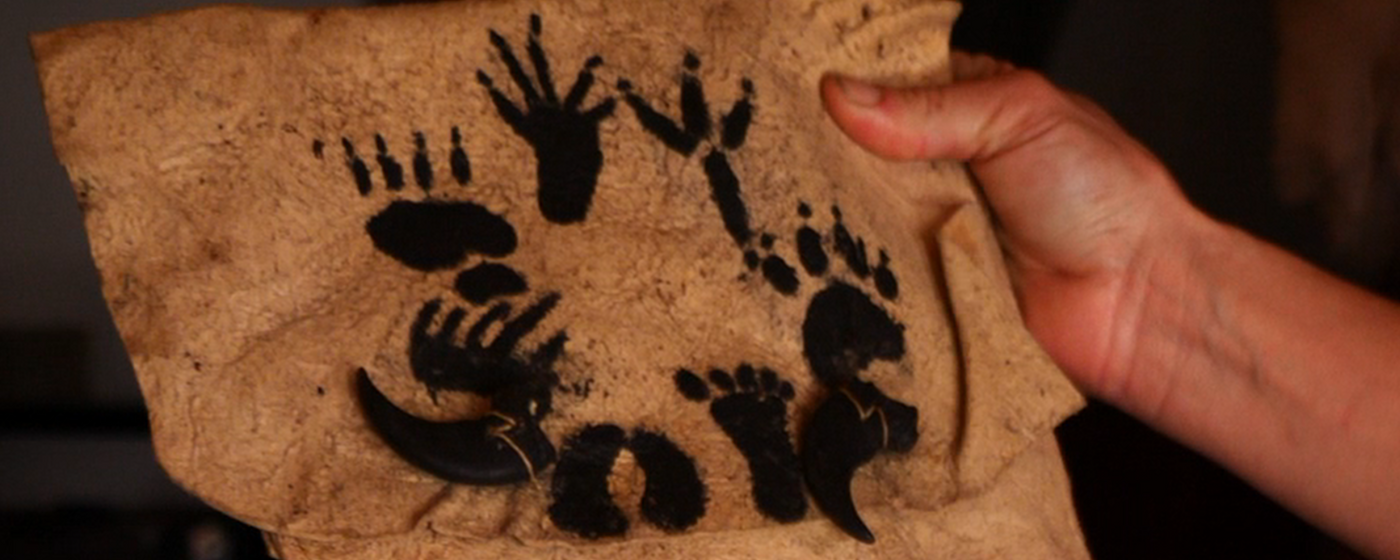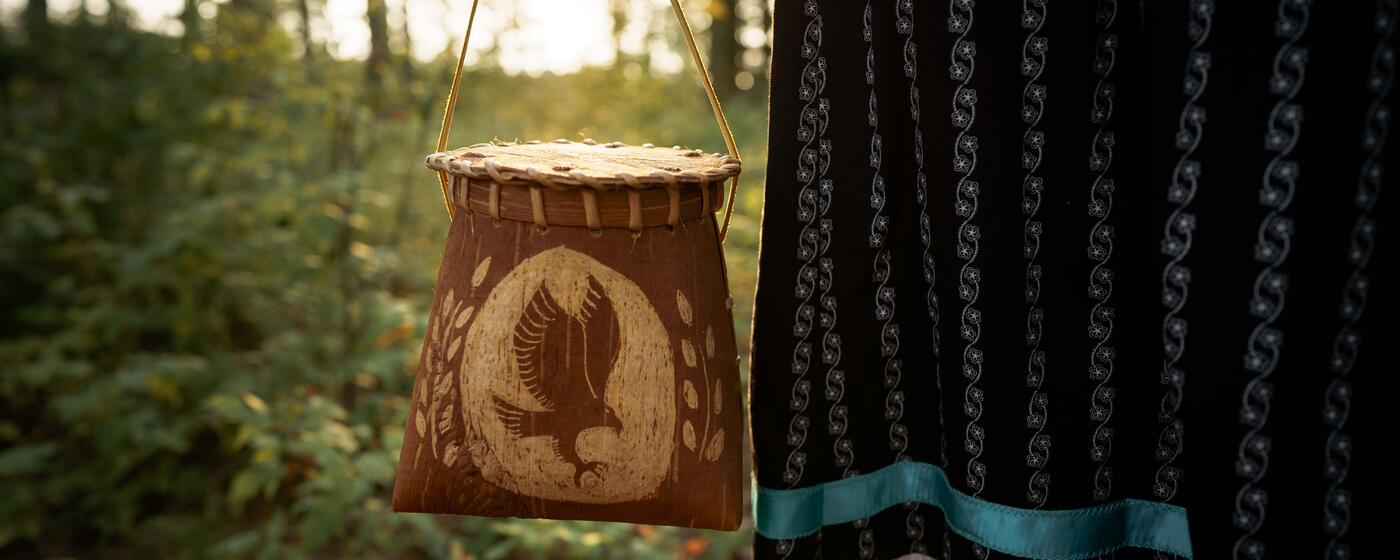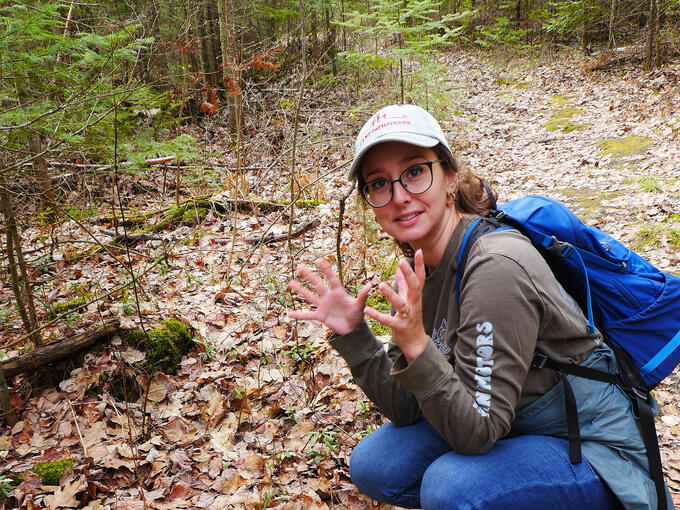
We had only taken a few steps from our vehicles when Christine, of Waaseyaa Cultural Tours, asked about my plant knowledge, which is, at best, a novice level. I can identify several plants fairly confidently but would be pressed to remember half of their helpful uses and, most importantly, the harm they can cause when misused. *Note: tour bookings can be made directly through Waaseyaa Cultural Tours - please visit their website for more information.
Christine started testing me at the trailhead: Do you know this plant?
I reply, It’s Labrador Tea. The green leaves clinging to the woody shrub give it away, still recognizable without its delicate white flowers. Aside from being used to make tea, I have no other helpful information to share.
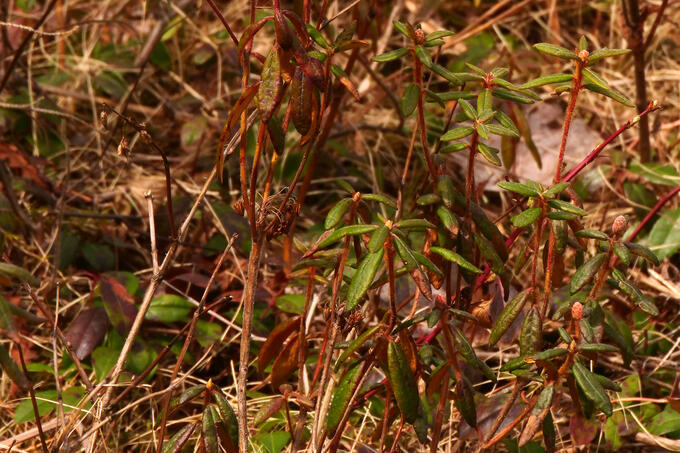
We hiked into the forest, and our conversation about the medicinal plant’s benefits blossomed in the warm morning weather. It was still cloudy, and rain showers were in the forecast, but so was the promise of a sunny day.
Animals were taking advantage of the growing heat: the sights and sounds of wildlife doing their spring chores filled the air. Chipmunks scattered as we approached, birds sang their morning tweets, a woodpecker’s knocking echoed in the trees, and a few biting bugs kept pace with us.
All around us, little green plants were spots of vibrant colour against the faded brown of the fallen leaves. We stopped for another test. I identified Wintergreen - the bright red berry gave it away.
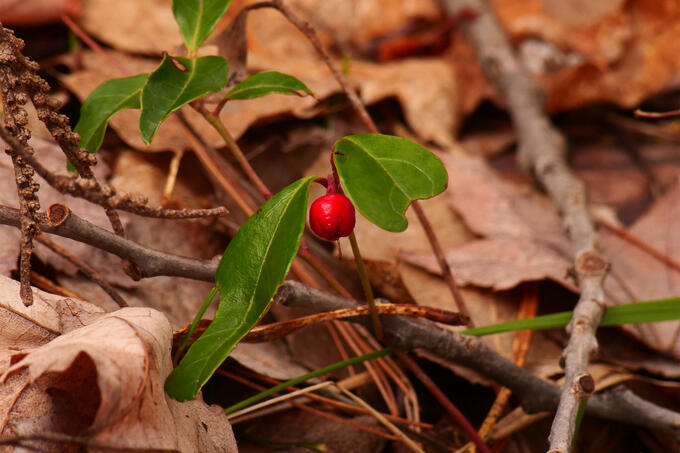
Christine’s connection with plants started when she was little. She would spend a lot of time with her Algonquin grandmother, poking around in her garden. She remembers pulling all the Bluebells from their stems and holding the little flowers in her hands.
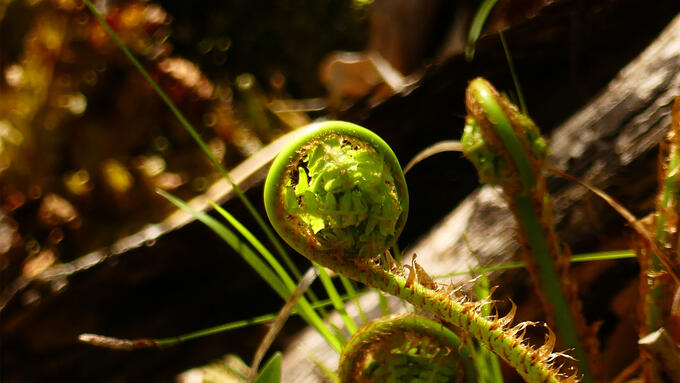
Her grandmother, affectionately nicknamed “Tootsie” or “Toots,” taught her grandchild the importance of letting them be and appreciating the plants where they are. She seeded a way of life in Christine: having good relations with your plant kin and encouraging kindness to the plants.
Toots passed when Christine was young, and it took her a long time to return to plants.
She left home for university and pursued professional work, but still spent a lot of time outdoors, even working as an Interior Ranger in Algonquin Park and keeping her close to the lands, waters, and plants she grew up with. Christine began learning from Knowledge Keepers and absorbing shared tidbits, but it wasn’t until eight years ago that the journey came full circle.
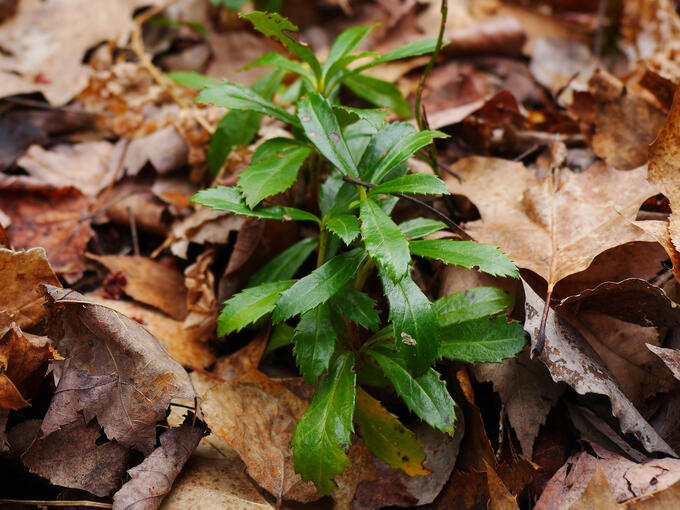
Christine returned home and moved into an old log cabin that her great-great-grandfather had built well over a hundred years ago - the very same cabin (and garden) her grandmother, Toots, had cared for before she passed away in 1999.
“Now that I was living there, I realized the garden had seen better days and was quite overgrown, so I revived [Grandma’s] garden and was able to revisit those plants. In living in that place, in that cabin that had been a home for my family for generations, being in the area that had sustained my family for so long, I started to walk the same path every day.”
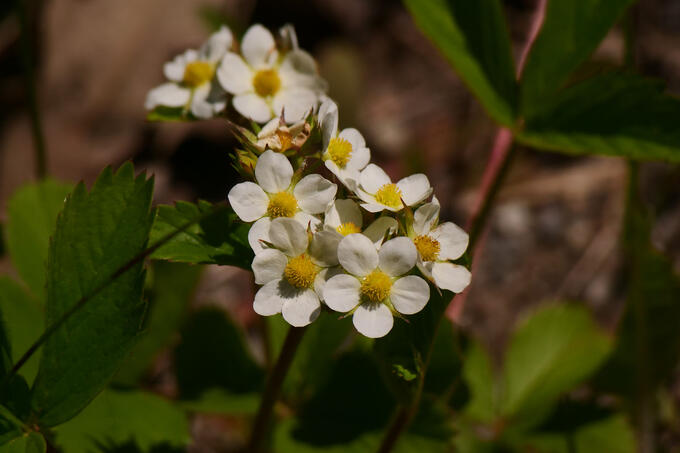
Christine visited the same plants from spring through summer and fall to watch them transform from budding out of the ground and flowering to bearing berries and fruit.
She learned what they tasted like and where they grew, expanding her knowledge and growing her relationships with plants and connection with the natural world.
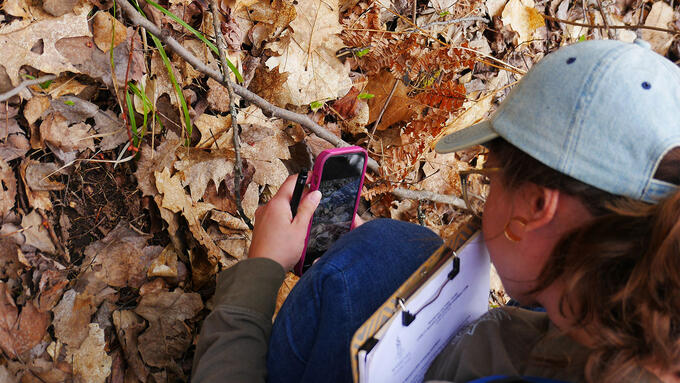
We hiked slowly, listening to birds, pausing to identify tree buds, and naming spring ephemeral flowers and their medicinal uses.
We stop often, and my memory is tested repeatedly. “What do you know about spring ephemerals, aside from coming out in the spring?”
I reply, “Spring flowers cannot waste time. They must dominate the insect market. They are low-growing, so they must burst forth before the understory grows.”
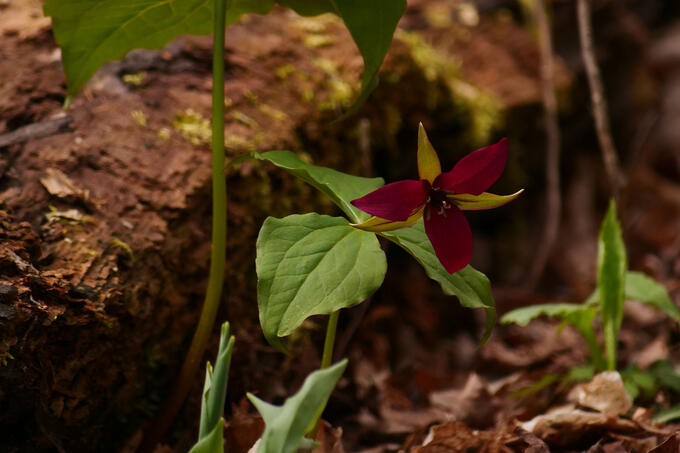
Christine tells me the word ephemeral comes from the Greek word ephēmeros, roughly translating to "lasting a day." She teaches me that spring flowers usually grow in colonies, have a symbiotic relationship with trees, and share nutrients with them through underground fungi.
The flowers grow early, surviving harsh spring conditions to take advantage of all the sunlight penetrating the bare trees to the forest floor.
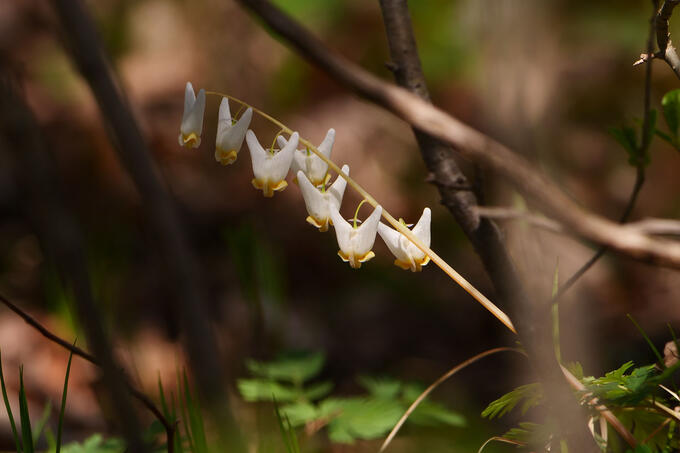
“How are spring flowers pollinated?” I confidently answered solitary bees, bumblebees and black flies. I found out that ants are also significant pollinators and play a big role in dispersing ephemeral flower seeds, such as Bloodroot, Trilliums, Hepatica, and Violets, to name a few.
There was much to learn from Christine.
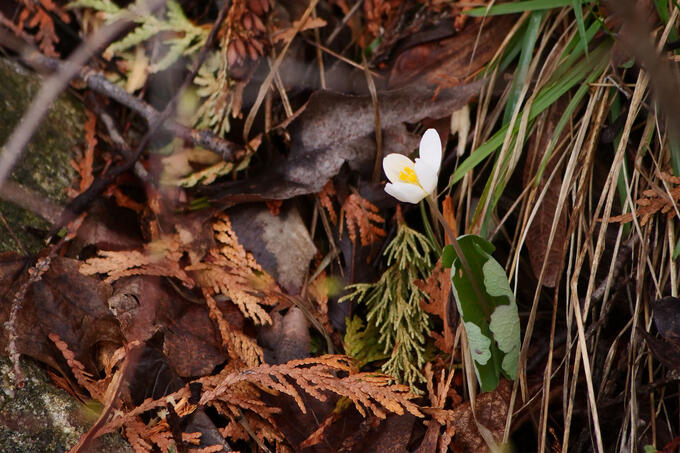
Christine taught me about the Yellow Trout Lily, which has male and female parts, so pollinators don’t need to visit multiple flowers for reproduction. The seeds then develop a sweet coating that attracts ants, who collect and carry them back to their nest.
The ants eat the sugary substance, leaving the seed in the tunnels. When the time is right, a new Yellow Trout Lily sprouts, starting its four to seven-year life cycle to make a single flower.
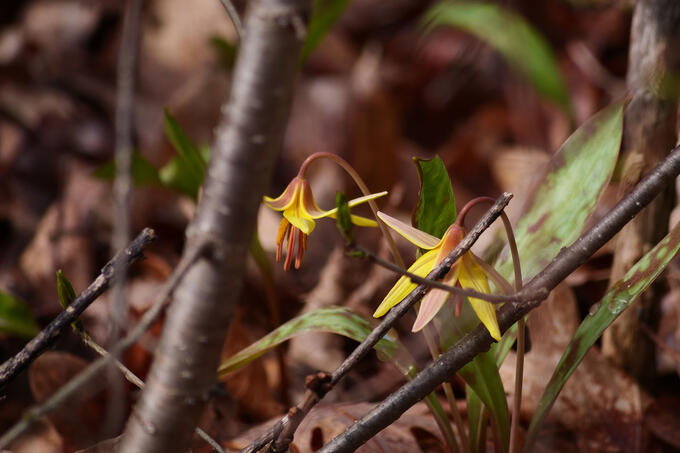
The clouds cleared without releasing a drop of rain, and the day was warming up fast: the birds had quieted with the midday heat. More hungry Black flies and mosquitoes were flying around us now, but I didn’t mind. I was enjoying myself too much.
We continued our ramble toward the south-facing hillsides to search for more spring flowers in bloom. We spotted Trilliums, Hepatica, Bloodroot, Morels, and False Morels and searched for Carolina Spring Beauties and Dutchman’s Breeches.
Above us, greening buds on the trees reached for the sun’s warmth. Soon, the forest canopy would leaf out, and dappled shade would clothe the understory.
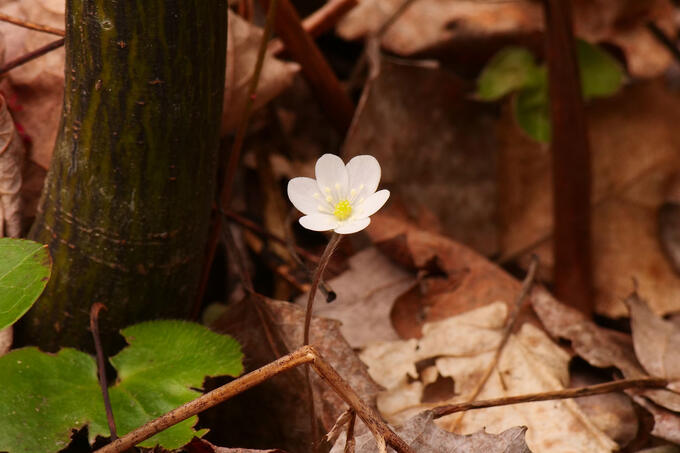
Christine taught me about sustainable picking and following the Honourable Harvesting Law.
Harvesters never pick from the first or the last; they only take what they need and use everything, ensuring that they harvest in a way that minimizes harm to the colony and surrounding plants.
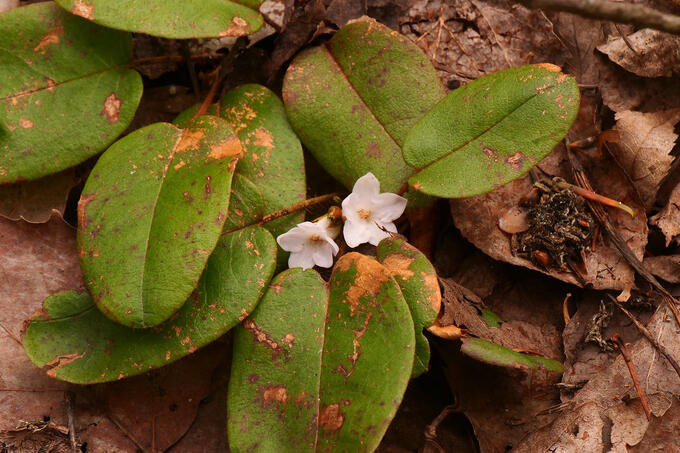
When Christine leads a hike, she aims to help people gain a deeper appreciation of the land they’re on and how to be in good relations with the more-than-human beings who call these places home. There was so much to love about finding blooms, buds, birds, and bugs, learning about what we saw, and gaining a greater appreciation of the natural world.
I imagine how this walk would change as more spring flowers bloom before the tree leaf out and, later, the carpets of summer flowers in the meadows and woodlands. Then, as fall arrives, cool weather fungi burst forth, and the leaves change into bright, warm colours with a last fiery show before the trees are bare once more.
This tour will have many wild wonders to learn about, regardless of season.
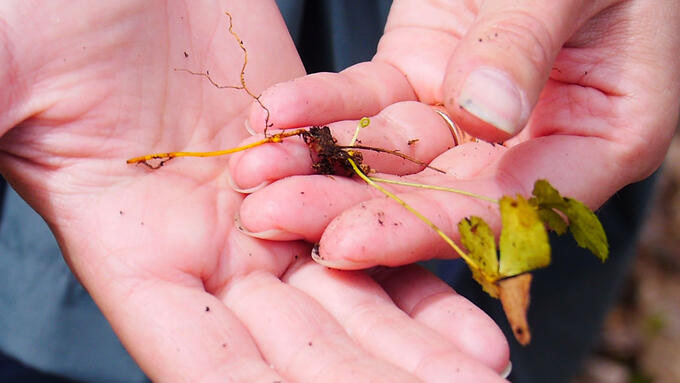
As the tour ended and we arrived at the trailhead, I longed to turn back the way we had come, to leave the highway sounds behind and immerse myself once again in nature.
This immersive experience nourished my body, mind, and soul as I reconnected with nature and “geeked out about plants,” as Christine says. What’s not to love?
Casuals Join Local Wanderer Heidi Csernak and Algonquin guide Christine Luckasavitch, Indigenous owner of Waaseyaa Cultural Tours, for a Medicinal Plant Walk on Unceded Algonquin Territory. IndigenousMedicinal Plant Walk, Waaseyaa Cultural Tours
Immerse in Tradition: A 3-Day Authentic Indigenous Trapping Experience
Immerse in Tradition: A 3-Day Authentic Indigenous Trapping Experience
